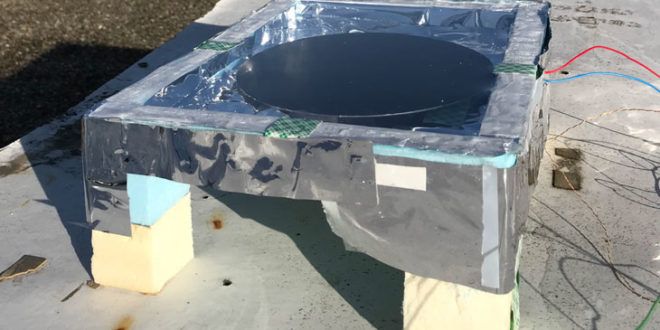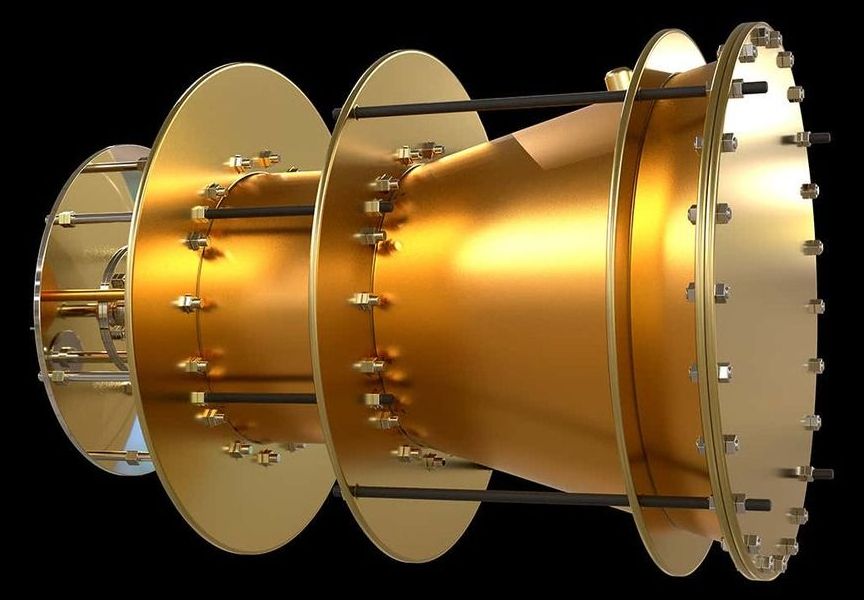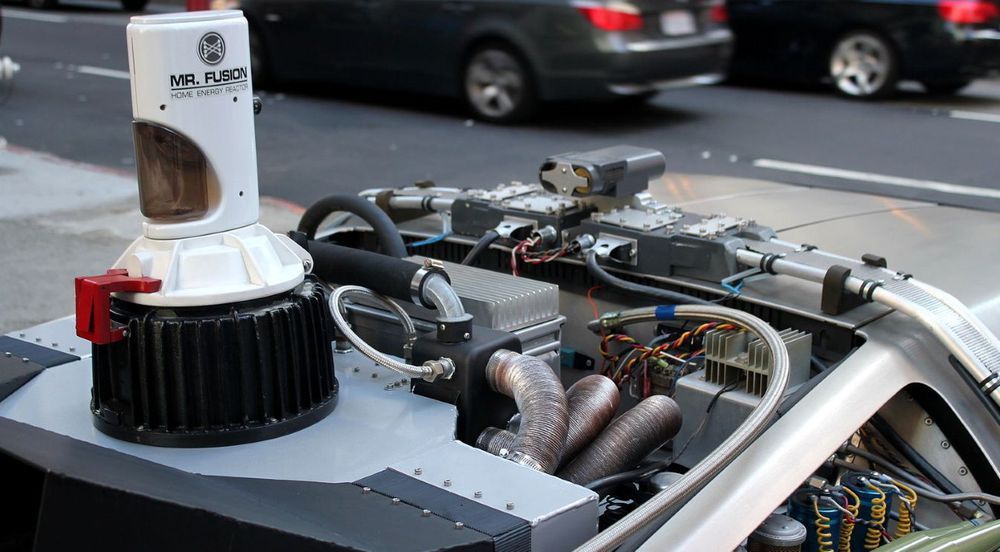Page 7367
Oct 11, 2019
Ever heard of an anti-solar panel? Here it is
Posted by Omuterema Akhahenda in categories: solar power, sustainability
In a recent paper (Generating Light from Darkness), published on Joule, Stanford University researchers Aaswath P. Raman, Wei Li, and Shanhui Fan are reporting the successful creation of a device that is able to generate electricity by exploiting the difference of temperature that can be established during the night between the surrounding air and the surface of the device that is cooling itself by emitting infrared radiations towards the night sky.
In a recent paper, published on Joule, Stanford University researchers are reporting the successful creation of a device that is able to generate electricity by exploiting the difference of temperature that can be established during the night between the surrounding air and the surface of the device that is cooling itself by emitting infrared radiations towards the night sky.
The possibility to generate electricity by exploiting thermal difference is not new, what is new here is the idea of creating a temperature difference by having part of the device radiating energy into the outer space.
Continue reading “Ever heard of an anti-solar panel? Here it is” »
Oct 11, 2019
Shape-shifting robot built from ‘smarticles’ shows new locomotion strategy
Posted by Paul Battista in categories: 3D printing, robotics/AI
Check out the new shape-shifting robot made out of “smarticiles” that show a new locomotive strategies!! https://www.sciencedaily.com/releases/2019/09/190918140759.htm ~via ScienceDaily… #churchofperpetuallife #perpetuallife #sciencedaily
Building conventional robots typically requires carefully combining components like motors, batteries, actuators, body segments, legs and wheels. Now, researchers have taken a new approach, building a robot entirely from smaller robots known as “smarticles” to unlock the principles of a potentially new locomotion technique.
The 3D-printed smarticles — short for smart active particles — can do just one thing: flap their two arms. But when five of these smarticles are confined in a circle, they begin to nudge one another, forming a robophysical system known as a “supersmarticle” that can move by itself. Adding a light or sound sensor allows the supersmarticle to move in response to the stimulus — and even be controlled well enough to navigate a maze.
Though rudimentary now, the notion of making robots from smaller robots — and taking advantage of the group capabilities that arise by combining individuals — could provide mechanically based control over very small robots. Ultimately, the emergent behavior of the group could provide a new locomotion and control approach for small robots that could potentially change shapes.
Oct 11, 2019
NASA engineer’s ‘helical engine’ may violate the laws of physics
Posted by Tracy R. Atkins in categories: energy, physics
“It would also need to be big – some 200 metres long and 12 metres in diameter – and powerful, requiring 165 megawatts of power to generate just 1 newton of thrust, which is about the same force you use to type on a keyboard. For that reason, the engine would only be able to reach meaningful speeds in the frictionless environment of space. “The engine itself would be able to get to 99 per cent the speed of light if you had enough time and power,” says Burns.”
A NASA engineer has published plans for an engine that could accelerate a rocket without using propellant. But there are questions over whether it could work.
Oct 11, 2019
Flint schools receive water stations, filtration systems from billionaire Elon Musk
Posted by Omuterema Akhahenda in categories: education, Elon Musk
The school district tweeted about the donation and Musk replied that he hopes “to do more help in the future.”
UPDATE: Water filters from Elon Musk being installed, tested in Flint Community Schools
The district says it will use Musk’s donation to replace drinking fountains with water stations using ultraviolet filtration equipment. The drinking fountains have been out of service since the Flint water crisis in 2015.
Oct 11, 2019
A NASA Engineer Wants to Use a Particle Accelerator to Power Rockets
Posted by Quinn Sena in category: particle physics
Oct 11, 2019
Lazareth LMV 496 Transforming Jet Hover Bike
Posted by Quinn Sena in categories: computing, transportation

This is the Lazareth LMV 496, which the world’s first transforming flying electric motorbike.
Lazareth have a jet engine in the hub of each wheel, and hydraulic actuators that tilt the four wheels out and up, forming a configuration something like a jet-powered hoverbike.
Continue reading “Lazareth LMV 496 Transforming Jet Hover Bike” »
Oct 11, 2019
For $150,000 you can now order your own Hoverbike
Posted by Quinn Sena in categories: engineering, law, transportation

Circa 2018
After first spotting this crazy looking motorcycle-styled hoverbike in early 2017, we were skeptical the contraption would ever move beyond just an odd engineering curiosity. However, Russian company Hoversurf has just revealed its hoverbikes are now ready for production and preorders are open, with delivery scheduled for sometime in 2019.
Continue reading “For $150,000 you can now order your own Hoverbike” »
Oct 11, 2019
The Navy Just Patented a Compact Fusion Reactor, but Will It Work?
Posted by Quinn Sena in categories: innovation, nuclear energy
The Navy just patented a major potential breakthrough on compact fusion reactors, but the patent is long on claims and short on implementation specifics.
Oct 11, 2019
Quantum Teleportation on the Nanoscale Using a Chemical Reaction
Posted by Quinn Sena in categories: chemistry, computing, encryption, nanotechnology, quantum physics
A team of Northwestern University researchers is the first to document the role chemistry will play in next generation computing and communication. By applying their expertise to the field of Quantum Information Science (QIS), they discovered how to move quantum information on the nanoscale through quantum teleportation—an emerging topic within the field of QIS. Their findings were published in the journal, Nature Chemistry, on September 23, 2019, and have untold potential to influence future research and application.
Quantum teleportation allows for the transfer of quantum information from one location to another, in addition to a more secure delivery of that information through significantly improved encryption.
The QIS field of research has long been the domain of physicists, and only in the past decade has drawn the attention and involvement of chemists who have applied their expertise to exploit the quantum nature of molecules for QIS applications.















